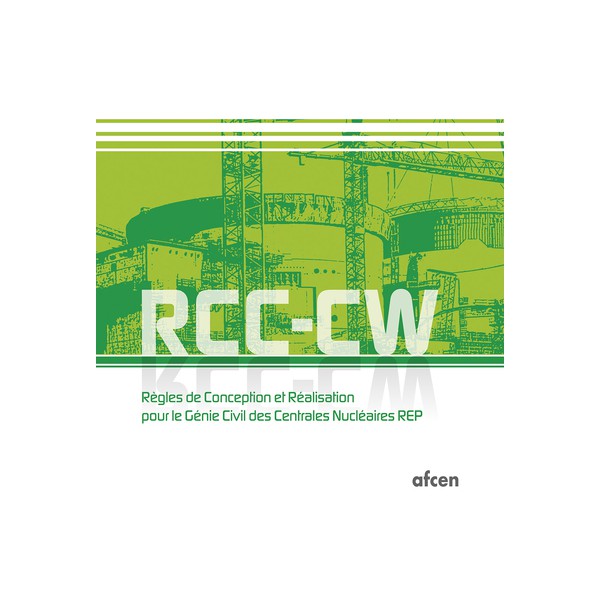RCC-CW 2018
Reference: AFC63


Purpose and scope
RCC-CW describes the rules for designing, building and testing civil engineering works in PWR reactors.
It explains the principles and requirements for the safety, serviceability and durability of concrete and metal frame structures, based on Eurocode design principles (European standards for the structural design of construction works) combined with specific measures for safety-class buildings.
The code is produced as part of the RCC-CW Subcommittee, which includes all the parties involved in civil engineering works in the nuclear sector: clients, contractors, general and specialized firms, consultancies and inspection offices.
The code covers the following areas relating to the design and construction of civil engineering works that play an important safety role:
- geotechnical aspects;
- reinforced concrete structures and galleries;
- prestressed containments with metal liner;
- metal containment and pool liners;
- metal frames;
- anchors;
- concrete cylinder pipes;
- containment leak tests.
The RCC-CW code is available as an ETC-C version specifically for EPR projects (European pressurized reactor).
Edition available as of January 2018
Edition: ETC-C 2010 and 2012
ETC-C 2010, first edition published by AFCEN has been used for the Generic Design Assessment of EPR in UK.
ETC-C 2012 integrates the feedback of Flamanville 3 and of the Generic Design Assessment.
Edition: RCC-CW 2015
Publication of the RCC-CW 2015 code early 2015 is the first edition that AFCEN has prepared and published of a generic civil engineering code that does not relate to any specific project.
It takes account of the latest changes in European standards.
It includes technological possibilities and improvements:
- bonded prestressing has been supplemented with unbonded prestressing;
- the code covers the design and development of seismic isolation devices;
- the section on external hazards has been updated to include tornadoes.
The design approach has been expanded to provide greater focus on the design extension situations in the complementary field.
Edition: RCC-CW 2016
In addition, the following improvements have been incorporated in RCC-CW 2016:
- correction of editorial mistakes, including those published as Errata 2016 of RCC-CW 2015;
- significant evolution of DANCH chapter to implement the new release of EN 1992-4.
Edition: RCC-CW 2017
The RCC-CW 2017 Edition includes the following improvements:
- Rules for anchor channels and active channels have been incorporated in chapters DANCH and CANCH;
- Chapter CCONC has been completely reworked to better fit to EN 13670 and to refer to last updated of EN 206. By the way, chapter CFNSH has been completely resorbed in CCONC.
- Chapter CCONC has been completely reworked to better fit to EN 13670 and to refer to last update of EN 206. By the way, chapter CFNSH has been completely resorbed in CCONC.
- A new chapter CCOAT for coatings and paints has been created;
- Actions to be considered in design extension hazard have been modified (chapter DGENR);
- Requirements for seismic soil column calculations have been included (appendix DA).
Edition: RCC-CW 2018
The AFCEN RCC-CW 2018 Edition includes the following improvements:
- Optimization of the requirements of minimum reinforcement,
- Introduction of construction requirements for post-installed anchors and recent update of norms
- Evolution of chaptering of reinforcement (CREIN) in conformance with EN13670
- General revision of tolerances requirements (CA)
-
RCC-CW 2018 - FRRègles de conception et réalisation pour le génie civil des centrales nucléaires REP

Take part in updating the codes
If you would like to modify a code, you can send your proposal to the relevant code subcommittee: download and complete the application form, then send the form to the subcommittee email address.
If you would like to understand the interpretation of a paragraph of the code: download the application form, enter your question and send the form to the email address of the relevant subcommittee.
If you want to benefit the nuclear industry from your feedback as a code user, share your expertise with AFCEN: download and complete the application form, then send it to the email address of the relevant subcommittee.




